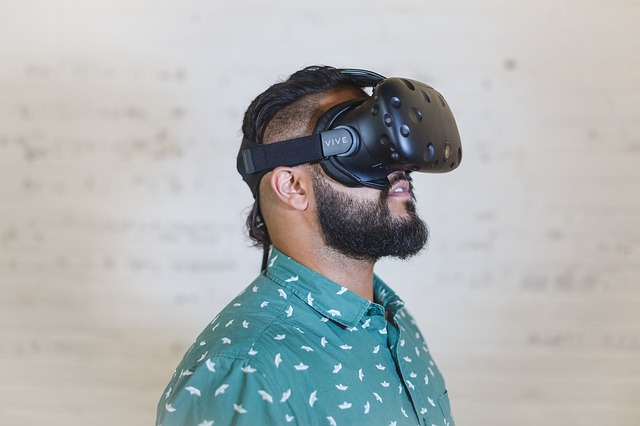https://youtu.be/vOoU5pz4lAU
The Narrative Theory Course is a part of the New York Film Academy’s Game Design curriculum. The class focuses on storytelling methods in gaming. Virtual Reality (VR) provides an entirely new way of looking at how to tell stories. Without the control limits of a two-dimensional screen the ability to direct a player’s eye-line is no longer an option. A whole new set of rules has to be developed. This new frontier of technology brought NYFA students to the IMAX VR Centre in Hollywood, CA.
For many students, this was their first experience with VR. “I had a really great time at the VR Center,” said student Kamen Marinov. “The moment I put those Oculus ‘goggles’ on my head I felt this strange feeling — that I was inside someone else. It was like I was seeing through another person’s eyes. It felt odd at first, but when I got used to the visuals and the game mechanics I had an amazing experience.”
Students were able to experience a ton of games that are new to the market. The new “Justice League” game based on the Warner Brother’s film allows players to drive the Batmobile or take out Steppenwolf’s lackeys with Cyborg’s arm cannon. This is just one of the many games currently on display. Set up in an arcade style, students can could jump into several cinematic worlds including “John Wick,” “The Mummy,” “Deadwood,” and the Star Trek and Star Wars franchises.
Some students choose to play two first-person shooters “Raw Data” and “John Wick.” Jeffery Lay found the experience both taxing and informative: “In ‘John Wick,’ I was hiding behind a bar, watching my six, as enemies come from everywhere. A big vase covering an area of my view-making forced me to me lean around it, or jump to shoot over it, even though in reality, nothing is there.”
“VR had a lot more movement than I expected,” said Lay. “I probably changed between standing and crouching about 50 to 100 times in a row.”
Nathan Hales wasn’t just having fun. He learned a lot. “The level of immersion offered by virtual reality is really something that one cannot explain but must be experienced,” said Hales. “I felt like I was living within these virtual spaces. I was cutting down robots in ‘Raw Data,’ instead of the usual extra degree of separation offered from a traditional TV or computer monitor setup. Moving forward with the knowledge I gained from experiencing the capabilities and limitations of virtual reality, I can now envision games for the medium.”
This is important because VR is a hot commodity in the entertainment industry. Since Nonny de la Pena’s VR project in immersive journalism entitled “Hunger in Los Angeles” premiered at Sundance 2012, there’s been a lot of buzz around the future of VR, yet there were many unanswered questions about the possibilities the new technology held at the time. Facebook set a new precedent when it acquired Oculus Rift in 2014. Since then, we’ve seen the development of both VR recording technologies and creative endeavors rapidly accelerate.
Overall, the day was a rousing success. The New York Film Academy would like to thank IMAX VR for giving our students an opportunity to glimpse the future of gaming.
